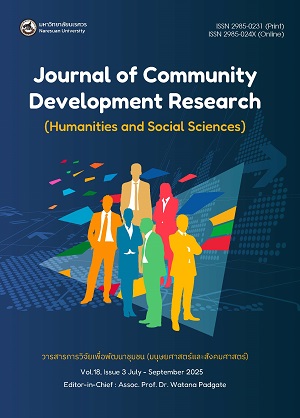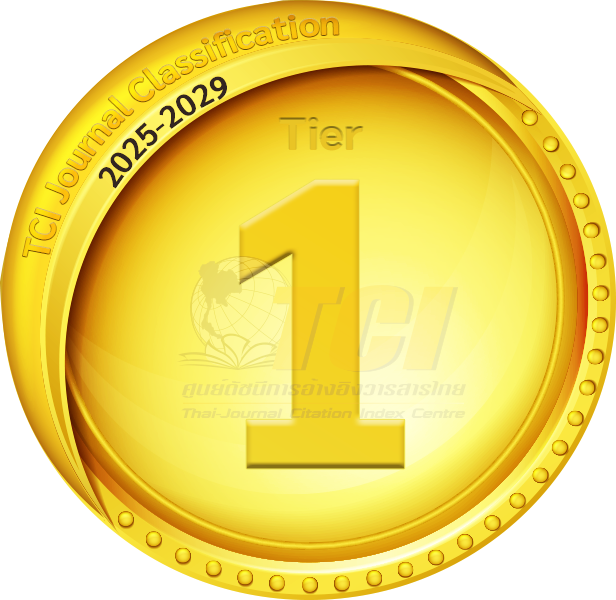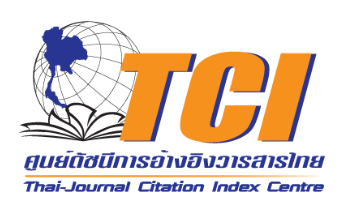An Analysis of Student Language Errors: A Case Study from a Thai Institutional Language Test
DOI:
https://doi.org/10.69650/jcdrhs.2025.907Keywords:
Assessment, Student Errors, PSRU English TestAbstract
This study analyzed student errors from the Pibulsongkram Rajabhat University English Test (PSRU ET), a standardized test developed by Pibulsongkram Rajabhat University to measure English language proficiency. Modeled after the TOEIC test, the PSRU ET has two sections, listening and reading, with this study focusing on the listening section. The listening section consists of four sections: 1) pictures, 2) question-response, 3) conversations, and 4) talks. The study aimed to identify which sections most significantly impacted student performance and involved compiling and analyzing the results from 1,981 student test papers. The study focused on identifying the percentage of incorrect responses and qualitative analysis of the question items with the highest rate of wrong responses. The sections with the highest percentages of negative answers were Section 2 (63.82%), Section 3 (52.32%), Section 4 (51.72%), and Section 1 (47.82%). These findings suggested that the question-response section poses the most significant challenge, potentially due to the format of the section, which stresses the importance of students’ English lexical knowledge, particularly their knowledge of vocabulary and spoken English. The results highlighted the need for targeted instructional strategies to improve student performance in these areas, contributing to enhanced language proficiency and test-taking ability.
References
Almeida, S. (2021). Vocabulary Knowledge and Its Impact on the Test-takers’ Performance in the IELTS Listening Test. SGS-Engineering & Sciences, 1(1), 524. Retrieved from https://spast.org/techrep/article/view/524
Charnchairerk, C. (2021). Predictive Validity of the CU-TEP as an Indicator of Students’ Academic Achievement in English. PASAA, 62(1), 29-60. https://doi.org/10.58837/CHULA.PASAA.62.1.2
Chen, S., Wallace, M. P., Sok Ieng, H., Chen, Y., Kuan Lam, W., & de Oliveria, S. C. (2023). Foreign Language Listening Comprehension and Listening Anxiety. Teaching English as a Second or Foreign Language, 27(2), a9. https://doi.org/10.55593/ej.27106a9
Creswell, J. W., & Plano Clark, V. L. (2007). Designing and Conducting Mixed Methods Research. Thousand Oaks, CA: Sage Publications.
Darti, & Asmawati, A. (2017). Analyzing Students’ Difficulties Toward Listening Comprehension. ETERNAL (English, Teaching, Learning, and Research Journal), 3(2), 211-228. https://doi.org/10.24252/Eternal.V32.2017.A9
de Bree, E., & Zee, M. (2020). The Unique Role of Verbal Memory, Vocabulary, Concentration and Self-efficacy in Children’s Listening Comprehension in Upper Elementary Grades. First Language, 41(2), 129-153. https://doi.org/10.1177/0142723720941680
Du, G., & Man, D. (2022). Person Factors and Strategic Processing in L2 Listening Comprehension: Examining the Role of Vocabulary Size, Metacognitive Knowledge, Self-efficacy, and Strategy Use. System, 107, 102801. https://doi.org/10.1016/j.system.2022.102801
Holzknecht, F., & Brunfaut, T. (2022). Individual Difference Factors for Second Language Listening. In S. Li, P. Hiver, & M. Papi (Eds.), The Routledge Handbook of Second Language Acquisition and Individual Differences (pp. 331-346). New York: Routledge. https://doi.org/10.4324/9781003270546-27
Juffs, A., & Harrington, M. (2011). Aspects of Working Memory in L2 Learning. Language Teaching, 44(2), 137-166. https://doi.org/10.1017/S0261444810000509
Keidser, G., With, S. B. L., Neher, T., & Rotger-Griful, S. (2023). Do Visual Cues Aid Comprehension of a Dialogue? The Hearing Journal, 76(3), 22-24. https://doi.org/10.1097/01.HJ.0000922292.15379.9d
Meccawy, M., Alzahrani, A., Mattar, Z., Almohammadi, R., Alzahrani, S., Aljizani, G., & Meccawy, Z. (2023). Assessing EFL Students’ Performance and Self-efficacy Using a Game-based Learning Approach. Education Sciences, 13(12), 1228. https://doi.org/10.3390/educsci13121228
Navawatana, N. (2024). A Development of the Standard English Listening Test of Pibulsongkram Rajabhat University. Humanities and Social Sciences Journal of Pibulsongkram Rajabhat University, 18(2), 493–506. https://doi.org/10.14456/psruhss.2024.34
Office of the Permanent Secretary, Ministry of Higher Education, Science, Research, and Innovation. (2024). Announcement of the Commission on Higher Education Standards Committee: Policy on Enhancing English Language Standards in Higher Education Institutions 2024. Retrieved from https://www.ops.go.th/th/e-book/edu-standard/item/9625-2567
Ortega, L. (2009). Understanding Second Language Acquisition. London: Routledge. https://doi.org/10.4324/9780203777282
Santacruz, D. I., & Ortega, D. M. (2018). Can Working Memory Strategies Enhance English Vocabulary Learning? HOW, 25(2), 29-47. https://doi.org/10.19183/how.25.2.410
Saraiwang, S., & Worawong, K. (2023). The Use of Task-based and Game-based Learning in English Learning at Small Primary Schools in Nakhon Pathom, Thailand. PASAA, 67(1), 101-138. https://doi.org/10.58837/CHULA.PASAA.67.1.4
Satori, M. (2021). Effects of Working Memory on L2 Linguistic Knowledge and L2 Listening Comprehension. Applied Psycholinguistics, 42(5), 1313-1340. https://doi.org/10.1017/S0142716421000345
Sengchuen, N. (2023). A Corpus-based Study of TOEIC Listening Vocabulary for Developing TOEIC Listening Word List for the Listening Exam. The Golden Teak: Humanity and Social Science Journal, 29(1), 74-90. Retrieved from https://so05.tci-thaijo.org/index.php/tgt/article/view/257164
Sounthornwiboon, P., Sriprasertpap, K., & Nilsook, P. (2025). Simulation Game-based Learning for Cognitive Apprenticeship Development: A Focus on Processing Speed. Cogent Education, 12(1), 2449280. https://doi.org/10.1080/2331186X.2024.2449280
Takahashi, Y., & Thumawongsa, N. (2024). Verb Error Analysis of Thai EFL Generation Z and Generation Alpha Students in Thailand. rEFLections, 31(2), 543-567. https://doi.org/10.61508/refl.v31i2.274817
Teng, M. F., & Zhang, D. (2023). The Associations between Working Memory and the Effects of Multimedia Input on L2 Vocabulary Learning. International Review of Applied Linguistics in Language Teaching, 61(3), 1021-1049. https://doi.org/10.1515/iral-2021-0130
Ueasiriwatthanachai, J. (2013). Environmental Influences on Competence in English as a Foreign Language: A Study of Thai Undergraduates at an International University in Thailand (Master’s thesis). National Institute of Development Administration, Bangkok. Retrieved from http://repository.nida.ac.th/handle/662723737/3230
Wang, Q. (2009). Design and Evaluation of a Collaborative Learning Environment. Computers & Education, 53(4), 1138–1146. https://doi.org/10.1016/j.compedu.2009.05.023
Wattananukij, W., & Pongpairoj, N. (2022). Interlanguage Pragmatics: An Investigation of Pragmatic Transfer in Responses to English Tag Questions by L1 Thai Learners. rEFLections, 29(1), 38-59. https://doi.org/10.61508/refl.v29i1.258474
Wen, Z., & Jackson, D. O. (2022). Working Memory. In S. Li, P. Hiver, & M. Papi (Eds.), The Routledge Handbook of Second Language Acquisition and Individual Differences (pp. 54–66). New York: Routledge. https://doi.org/10.4324/9781003270546-5
Yu, X., Janse, E., & Schoonen, R. (2021). The Effect of Learning Context on L2 Listening Development: Knowledge and Processing. Studies in Second Language Acquisition, 43(2), 329-354. https://doi.org/10.1017/S0272263120000534
Zhang, S., & Zhang, X. (2020). The Relationship between Vocabulary Knowledge and L2 Reading/Listening Comprehension: A Meta-analysis. Language Teaching Research, 26(4), 696-725. https://doi.org/10.1177/1362168820913998
Zhang, X., & Kimura, H. (2024). Listening and Affective Factors. In E. Wagner, A. Olaf Batty, & E. Galaczi (Eds.), The Routledge Handbook of Second Language Acquisition and Listening (pp. 69-82). New York: Routledge. https://doi.org/10.4324/9781003219552-7
Zhang, Y., & Xu, J. (2025). An Investigation Into Self-efficacy, Anxiety, and L2 Listening Comprehension: The Mediation of Metacognitive Awareness. International Journal of Listening, 39(1), 83-97. https://doi.org/10.1080/10904018.2024.2386290
Downloads
Published
How to Cite
Issue
Section
License
Copyright (c) 2025 Journal of Community Development Research (Humanities and Social Sciences)

This work is licensed under a Creative Commons Attribution 4.0 International License.









